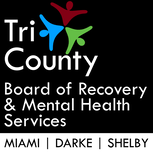
Called "Sequential Intercept Mapping," the sessions trace the possible pathways for persons with behavioral health needs and who are involved in the legal system. An "intercept" is defined as a point of contact. For example, the entry point to the system - Intercept 1 - may be a 9-1-1 call or contact with a police officer, for example.
The sessions Dec. 11 and 12 at the Sidney Police Department training facility were led by professionals from the Ohio Criminal Justice Coordinating Center of Excellence, embedded at the Northeast Ohio Medical University in Rootstown, near Akron. It is the goal of the CJ/CCoE "for each county in Ohio to develop an array of programs that will divert people with mental disorders from jail and keep people with mental disorders in treatment."
A first step toward the goal of appropriate diversion is to know what services and systems each county currently employs, and where the gaps may be. According to the CJ/CCoE website, "The Sequential Intercept Model proposes that there are a number of 'points of interceptions' or opportunities where an intervention can be made with a person with mental illness that will keep that individual from entering or going 'deeper' into the criminal justice system."
The training was funded by an Edward Byrne Memorial Justice Assistance Grant to the CJ/CCoE, and arranged by the Tri-County Board of Recovery and Mental Health Services in cooperation with the Shelby County Sheriff's Office and the Sidney Police Department.
One outcome of the training is the establishment of working subgroups who are researching specific topics and who will report back with additional information or with specific plans or strategies for improving systems in Shelby County. The group plans to re-convene sometime in the first quarter of 2015.
 RSS Feed
RSS Feed
